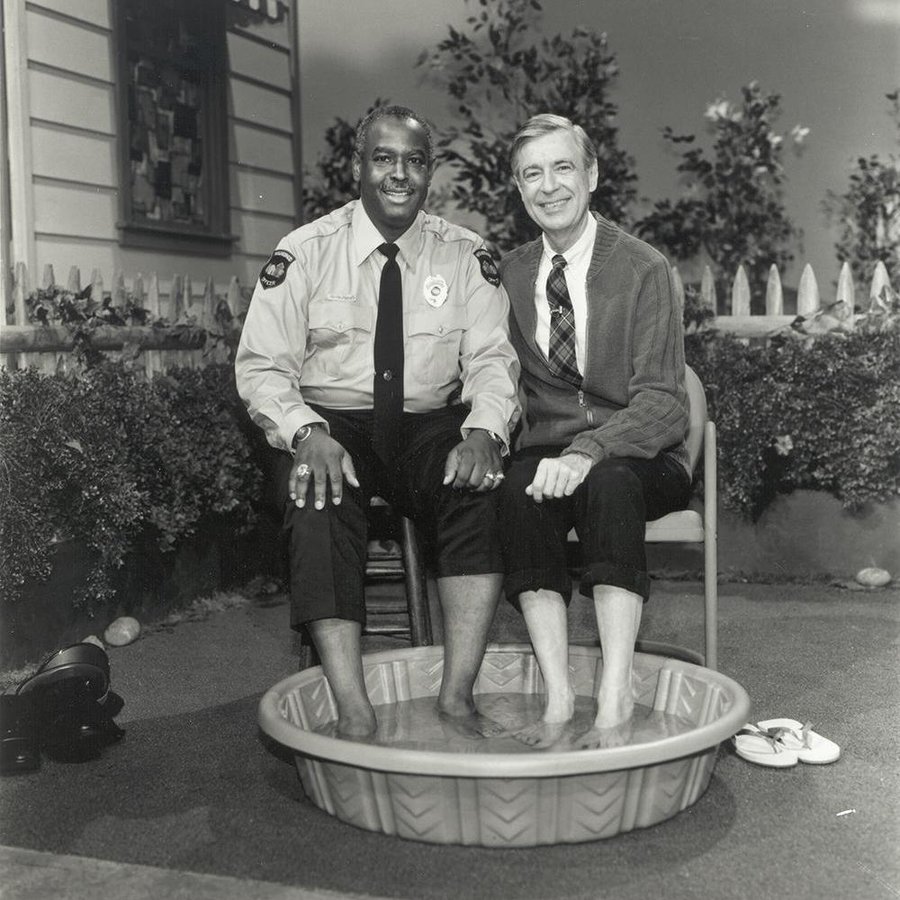Fred Rogers began the episode of Mr. Rogers’ Neighborhood just like he’d done a hundred times before, “by putting on his cardigan and buttoning it up.” Only this time, according to Hedda Sharapan, a producer and actor who was often involved with the show, something wasn’t right. “He had started at the wrong buttonhole; he was one button off.” The crew expected Fred to start over. Instead, He gave Sharapan a look and kept on, ad libbing an explanation to his children audience just “how easy it is to make mistakes” and then spent the extra time showing them how to correct it (pg, 193).
Any other show would have snubbed the first take and instantly recorded a second. Not so with Mr. Rogers. He understood that mistakes were a huge part of life, that they were essential to life, and that his young audience needed understand that. So embraced the silly mistake and used it as a teachable moment, because he cared deeply about children, and because he knew exactly what they needed most.
After years of training, researching and observing young children in the classroom and in life, and after studying and listening to them and their stories and thoughts, Rogers become a master teacher who cared deeply for the holistic development of children. They became his chief concern. More than money, more than fame, more than job security, Fred Rogers cared about his children audience.
Which is why, in contrast to his competition, Mr. Rogers’ show was slow, even crawling at times, because he knew that was what his young audience needed.
“Rogers’s embrace of reality also included breaking one of the established rules of television, a prohibition against footage that is essentially empty. While Sesame Street used fast pacing and quick-cut technique to excite and engage their viewers and keep them glued to the screen, Fred Rogers deliberately headed in the opposite direction, creating his own quiet, slow-paced, thoughtful world, which led to real learning in his view” (pg, 194).
Fred Rogers believed children were entertained enough. That instead of another fast-paced tv show that kept children distracted, what they needed was time.
“He really was interested in the child as a developing person” Maxwell King wrote in The Good Neighbor: The Life and Work of Fred Rogers, which is why Rogers feared constant entertainment; it would engage his audience but weaken their minds. And if they had a weak mind, they would not fully grasp who they were, what they were, and how they thought.
“Our job in life,” Rogers believed, “is to help people realize how rare and valuable each one of us really is - that each of us has something that no one else has - or ever will have - something inside which is unique to all time. It’s our job to encourage each other to discover that uniqueness, and to provide ways of developing its expression (pg 237).
For Mr. Roger, in order for children to discover their uniqueness, they needed silence, time, and space. Silence so that they could hear themselves think, time to consider those thoughts, then space to work them out, to fail, and then to try again. They need opportunities to be human, and they needed adults to model humanity for them, to teach them, and to encourage them that life can be hard but that we can always work to correct it. Even when it’s something as simply as a missing a buttonhole.
“One of the major goals of education,” Mr. Rogers believed, “must be to help students discover a greater awareness of their own unique selves, in order to increase their feelings of personal worth, responsibility, and freedom” (pg 328).
In contrast, classrooms, living rooms, and car rides that fill the silence with gimmicks, screens, and distractions leave little room for such self-reflection and no time for imagination.
“Fred Rogers lived out the conundrum of modern life: embracing technology and using it in imaginative ways to benefit children, while rejecting the dehumanizing aspects of complex technological advancement” (pg 80).
For our children’s sake, for our future’s sake, embrace the silence, fight for the quiet, and allow time and space for children to think, make mistakes, and try again. It’s what Mr. Rogers would do. And he was the master of a pretty amazing neighborhood.
But so can we.
For more on . . .


